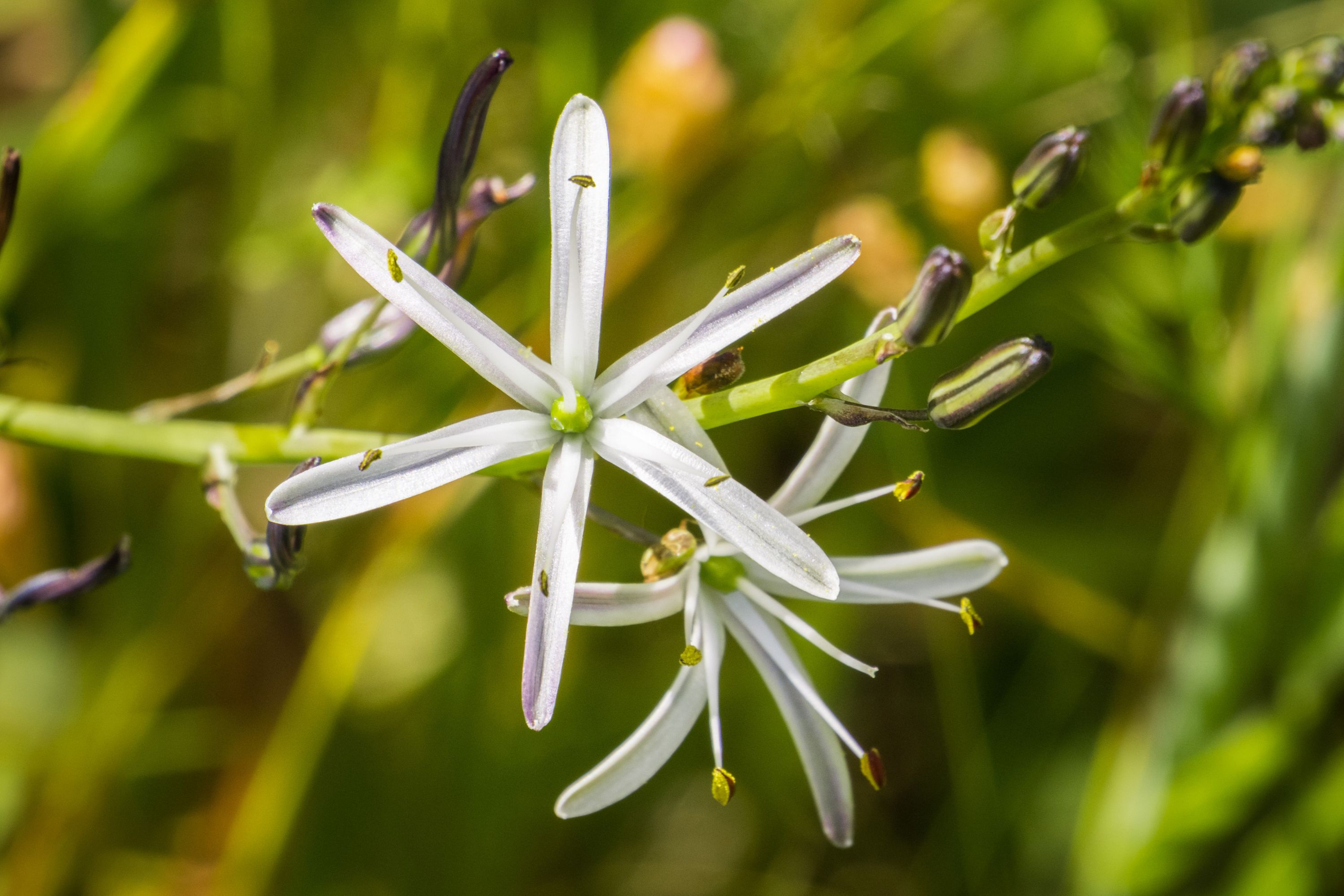Wavy-leafed soap plant
(Chlorogalum pomeridianum)

Description
Chlorogalum pomeridianum, the wavy-leafed soap plant, California soaproot, or Amole, is the most common and most widely distributed of the soap plants, soaproots or amoles, which make up the genus Chlorogalum of flowering plants. It is occasionally known as the "wild potato", but given the plant's lack of either resemblance or relationship to the potato, this name is not recommended. It is found in most of California from the coasts to the western foothills of the Sierra Nevada, and in the Klamath Mountains in southwestern Oregon, but not in either state's desert regions. Wavy-leafed soap plant grows on rock bluffs, grasslands, chaparral, and in open woodlands. Like all the soap plants, Chlorogalum pomeridianum is a perennial that grows from a bulb, which is brown, between 7 and 15 cm in diameter, slightly elongated, and covered in thick, coarse fibers. The leaves grow from the base of the plant, and can be from 20 to 70 cm long and 6 to 25 mm wide. As the plant's name indicates, their edges are generally wavy, though this is not always particularly noticeable. The flowers are borne on a long stem, normally longer than the leaves, and are from 15 to 30 mm long. The six petals (actually only three of them are petals in the technical sense; the other three are sepals) are up to 35 mm long and curving. They are typically white but have a noticeable mid-vein which can be purple or green. The six stamens are large and noticeable, and yellow or orange. The flowers are hermaphrodites (having both female and male parts). They open only in the late afternoon or evening, remaining open during the night but closing by the morning. Pollination is by evening- or night-flying insects. The fibers surrounding the bulb were widely used, bound together, to make small brushes. Extracts of the bulbs could also be used as a sealant or glue. The juices of the bulb contain saponins that form a lather when mixed with water, and both Native American people (e.g. Miwok tribe) and early European settlers used the bulbs as a kind of soap; this is the origin of the plant's name. It was particularly used for washing hair, since it was held to be effective against dandruff.
Taxonomic tree:







